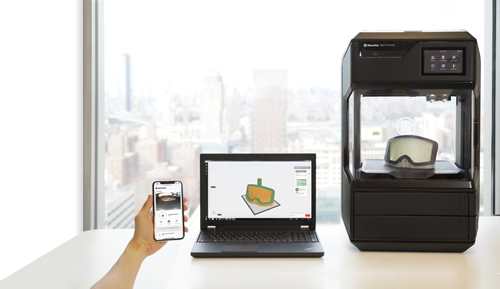3D printing is becoming an increasingly important part of educators’ interactive and engaging STEAM learning strategies, a new survey reveals.
As teaching methods progress from more traditional learning environments to more dynamic and active, educators are seeking new ways to help students build important 21st-century skills such a critical thinking and problem solving, according to a new survey from 3D printer manufacturer MakerBot.
The survey is based on more than 1,000 responses from educators across the globe and paints a picture of how 3D printing is becoming more accessible in classrooms.
Related content: How STEAM supports creativity and confidence
Sixty-three percent of respondents use 3D printing to better prepare their students for the workforce, but they also say they’d like access to more than a 3D printer: 65 percent say online training programs would help them implement 3D printers and related technologies better, while 63 percent would like lesson plans and 56 percent would like educational webinars to help them use 3D printers to a fuller extent.
Five other key findings include:
1. Authentic learning experiences are becoming a popular new teaching method. Design-based learning (57 percent), integrated learning (51 percent), and collaborative learning (49 percent) were identified as the top teaching methods among respondents. Only 42 percent of respondents stated that they still use traditional learning settings with students.
2. Teaching STEAM subjects requires resources that schools may not have. Budget constraints (56 percent), insufficient equipment (45 percent), and lack of technical training (39 percent) were cited as the top challenges to teaching STEAM subjects.
3. 3D printing is widely used to develop practical skills that can be used beyond the classroom. Respondents cited developing problem-solving skills (63 percent), skill sets for future careers (63 percent), and creative thinking skills (63 percent) as their top reasons for 3D printing adoption.
4. Educators want more than just a 3D printer. They want a full 3D printing ecosystem. 82 percent of respondents cited 3D printing resources (i.e., lesson plans, training programs, etc.) as important factors when choosing a 3D printer.
5. Costs, reliability, and ease-of-use play important roles in decision-making. 95 percent of respondents rated reliability as an important benefit, while 90 percent said ease-of-use was important and 89 percent said costs were important.
Before the global COVID-19 pandemic forced many schools online and further complicated STEAM instruction, budget constraints and insufficient funding were the top challenge educators face when teaching STEAM (56 percent), followed by insufficient equipment for the classroom or school (45 percent) and insufficient technical training or knowledge for educators (39 percent).
Now that much of instruction remains hybrid or fully online, educators say that when teaching STEAM subjects virtually, students are unable to practice what they’ve learned, such as problem-based learning or prototyping (64 percent); students don’t have access to the required technology, such as the internet or a computer, for STEAM activities (52 percent); and there is no curriculum to teach STEAM subjects virtually (46 percent).
“The importance of 3D printing in education cannot be overstated. The report revealed the shift from traditional learning environments to more interactive and engaging approaches. By teaching visualization, design and creation via 3D printing, 3D printing opens up opportunities for students and brings ideas to life,” says Nadav Goshen, CEO of MakerBot.
- 4 ways to support work-based learning - April 23, 2024
- Prioritizing inclusivity in game-based learning - April 22, 2024
- Friday 5: Universal Design for Learning - April 19, 2024

